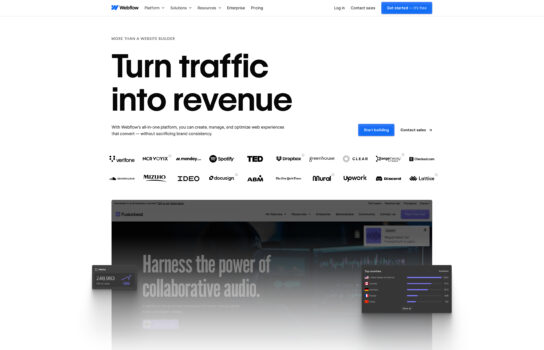Our Verdict
What is Webflow?
Webflow is a visual web development platform that allows users to design, build, and launch responsive websites without needing to write code—though it also gives full access to the code for those who want to customize deeply. Here are its main features:
- Visual Design Tool
- Drag-and-drop interface similar to tools like Figma or Adobe XD
- Translates designs into clean HTML, CSS, and JavaScript in real time
- CMS (Content Management System)
- Lets you build dynamic, content-driven websites (e.g. blogs, portfolios)
- Create custom content types without databases or plugins
- Hosting and Deployment
- Secure hosting on Webflow’s servers with CDN support
- Automatic backups, version control, and SSL included
- Interactions and Animations
- No-code tools to build complex animations and scroll effects
- E-commerce
- Build and manage online stores, from product pages to checkout
- Customize without being locked into templates
- SEO and Performance
- Fast-loading pages, clean code, and SEO tools built in
Is Webflow worth registering and paying for?
Webflow is worth paying for if you need full design control without coding, want to build custom websites beyond templates, or require a powerful CMS for dynamic content like blogs and portfolios. It’s ideal for designers, freelancers, startups, and agencies who value pixel-perfect design, animations, and secure built-in hosting. However, it may not be the best fit for simple personal sites, beginners unfamiliar with web design concepts, or projects requiring advanced backend features like user logins or forums. While Webflow offers professional-grade tools and impressive flexibility, its learning curve and higher pricing compared to basic builders like Wix or WordPress.com might not suit everyone.









